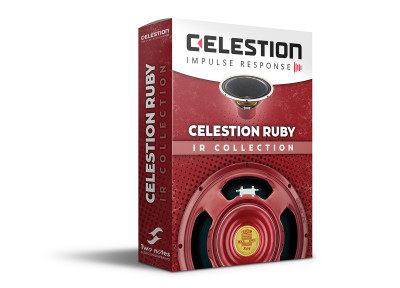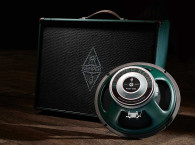
The Celestion Ruby Two Notes Impulse Responses have been fully re-created in Two Notes’ proprietary format and are available both in the Two notes store, as well as alongside the full line of other genuine Celestion Impulse Responses on CelestionPlus.
The Celestion Ruby Two Notes speaker impulse responses perfectly emulate the sound of the physical guitar speaker (add figurative adjectives) with its familiar alnico vibe, as recorded in a world-class live room. The Celestion Ruby impulse responses in Two Notes format include five different cabinet configurations, available both individually and as a collection:
 1×12 (open back)
1×12 (open back)1×12 (closed back)
2×12 (open back)
4×12(closed back)
The package also gives access to all the available functionality of the Two notes environment. Each cabinet is recorded with 8 microphones, and the user has the capability to move around each microphone in the virtual room: an almost limitless number of IRs generated by the Two notes proprietary format. Each impulse response is fully compatible with the Overload Parameter (available in both Wall of Sound and Torpedo Studio), a unique non-linear convolution processing capability that is able to reproduce the distortion of the speaker when pushed hard. And there is there’s no difference in quality between the current WAV files and the new Two notes’ format files. Users get the same highly accurate speaker tones, simply in a format best tailored to the Two notes environment.
Furthermore, adding Celestion IRs to the Two notes environment means users also get the Celestion quality tone re-produced using five additional microphones: AKG C414EB, AKG D12, Beyer Dynamic M160, Coles 4038 and the Neumann U47.
Users can still use Celestion’s standard WAV format IRs on Two notes’ hardware and software as before, but without the full functionality and additional microphones offered by the Two Notes proprietary format.
The new Celestion Two Notes Ruby Impulse Responses join the collection of other IRs available in Two Notes format such as: Neo 250 Copperback (Two Notes), Laney cabinets (Two Notes), Orange Cabinets (Two Notes), Suhr Cabinets (Two Notes), Celestion Blue (Two Notes), G12M Greenback (Two Notes) and Vintage 30 (Two Notes).

Celestion IR digital downloads are available in uncompressed, industry standard .WAV format at 44.1 kHz, 48 kHz, 88.2 kHz and 96 kHz sample rates at 24 bit depth, in lengths of 200 and 500 milliseconds. These formats will work in all known hardware capable of loading IRs, and for the most popular hardware Celestion have already grouped together the correct formats. Guitar processor manufacturers supported include (but are not limited to) Atomic Amps, Fractal Audio Systems, Kemper, Line 6, Logidy, Positive Grid, Two Notes, Headrush and Yamaha. The Celestion IR files may be downloaded in the sample rate and length appropriate for the hardware being used or as a complete package of all rates and lengths. Certain third party hardware requires the files to be converted into a proprietary format before use.
www.celestionplus.com | www.celestion.com






